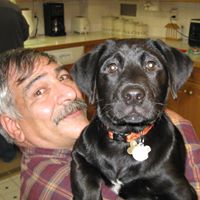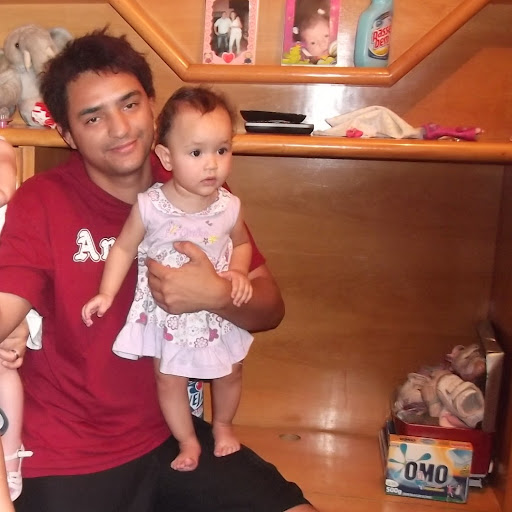David J Napolitano
age ~30
from Littleton, CO
David Napolitano Phones & Addresses
- Littleton, CO
- New York, NY
- Danville, CA
- Brooklyn, NY
Work
-
Company:Morgan stanley
-
Address:1585 Broadway, New York, NY 10036
-
Phones:212 761-4000
-
Position:Senior vice president for investments
-
Industries:State Commercial Banks
Name / Title
Company / Classification
Phones & Addresses
Senior Vice President For Investments
Morgan Stanley
State Commercial Banks
State Commercial Banks
1585 Broadway, New York, NY 10036
Resumes

Supervisor
view sourceLocation:
150 William St, New York, NY 10038
Industry:
Utilities
Work:
Con Edison
Supervisor
Con Edison Sep 2009 - Nov 2011
Troubleshooter
Con Edison Mar 2005 - Sep 2009
Chief Lineman
Supervisor
Con Edison Sep 2009 - Nov 2011
Troubleshooter
Con Edison Mar 2005 - Sep 2009
Chief Lineman
Education:
Jamaica / Somonauk High School 1989 - 1990
Skills:
Energy
Project Management
Process Improvement
Supervisory Skills
Construction
Electric Power
Power Generation
Project Management
Process Improvement
Supervisory Skills
Construction
Electric Power
Power Generation

Analyst
view sourceLocation:
New York, NY
Industry:
Computer & Network Security
Work:
Packet Ninjas Jun 2015 - Apr 2016
Analyst
Sandia National Laboratories Jun 2011 - Aug 2011
Student Intern
Analyst
Sandia National Laboratories Jun 2011 - Aug 2011
Student Intern
Interests:
Psychology
Research
Computer Security
Technology
Photography
Research
Computer Security
Technology
Photography

Operations Manager
view sourceLocation:
New York, NY
Industry:
Defense & Space
Work:
Mitre Nov 2000 - Feb 2008
Business Operations Manager
Mitre Nov 2000 - Feb 2008
Operations Manager
Mitre Nov 1998 - Nov 2000
Assistant Business Operations Manager
Business Operations Manager
Mitre Nov 2000 - Feb 2008
Operations Manager
Mitre Nov 1998 - Nov 2000
Assistant Business Operations Manager
Education:
Pace University 1990 - 1994
Bachelors, Bachelor of Business Administration, Accounting Monmouth University
Master of Business Administration, Masters
Bachelors, Bachelor of Business Administration, Accounting Monmouth University
Master of Business Administration, Masters
Skills:
Dod
Integration
Budgets
Leadership
Integration
Budgets
Leadership

David Napolitano
view source
David Napolitano
view source
David Napolitano
view source
David Napolitano
view sourceUs Patents
-
Multiple Ultrasound Image Registration System, Method And Transducer
view source -
US Patent:6360027, Mar 19, 2002
-
Filed:Sep 26, 2000
-
Appl. No.:09/669818
-
Inventors:John A. Hossack - Palo Alto CA
Samuel H. Maslak - Woodside CA
Edward A. Gardner - San Jose CA
Gregory L. Holley - Mountain View CA
David J. Napolitano - Menlo Park CA -
Assignee:Acuson Corporation - Mountain View CA
-
International Classification:G06K 900
-
US Classification:382294, 382131, 382232, 382236, 382276, 382298, 3483841, 3483901, 375240, 37524001, 600437, 600443, 600447
-
Abstract:An ultrasonic imaging system includes an ultrasonic transducer having an image data array and a tracking array at each end of the image data array. The tracking arrays are oriented transversely to the image data array. Images from the image data array are used to reconstruct a three-dimensional representation of the target. The relative movement between respective frames of the image data is automatically estimated by a motion estimator, based on frames of data from the tracking arrays. As the transducer is rotated about the azimuthal axis of the image data array, features of the target remain within the image planes of the tracking arrays. Movements of these features in the image planes of the tracking arrays are used to estimate motion as required for the three-dimensional reconstruction. Similar techniques estimate motion within the plane of an image to create an extended field of view.
-
Diagnostic Ultrasound Imaging Method And System With Improved Frame Rate
view source -
US Patent:6436046, Aug 20, 2002
-
Filed:Oct 27, 2000
-
Appl. No.:09/698995
-
Inventors:David J. Napolitano - Pleasanton CA
Christopher R. Cole - Redwood City CA
Gregory L. Holley - Mountain View CA
John A. Hossack - Palo Alto CA
Charles E. Bradley - Burlingame CA
Patrick Phillips - Sunnyvale CA -
Assignee:Acuson Corporation - Mountain View CA
-
International Classification:A61B 800
-
US Classification:600447, 600458
-
Abstract:A medical diagnostic ultrasonic imaging system acquires receive beams from spatially distinct transmit beams. The receive beams alternate in type between at least first and second types across the region being imaged. The first and second types of receive beams differ in at least one scan parameter other than transmit and receive line geometry, and can for example differ in transmit phase, transmit or receive aperture, system frequency, transmit focus, complex phase angle, transmit code or transmit gain. Receive beams associated with spatially distinct ones of the transmit beams (including at least one beam of the first type and at least one beam of the second type) are then combined. In this way, many two-pulse techniques, including, for example, phase inversion techniques, synthetic aperture techniques, synthetic frequency techniques, and synthetic focus techniques, can be used while substantially reducing the frame rate penalty normally associated with such techniques.
-
Method And Apparatus For Forming Medical Ultrasound Images
view source -
US Patent:6517489, Feb 11, 2003
-
Filed:Apr 19, 2001
-
Appl. No.:09/839709
-
Inventors:Patrick J. Phillips - Sunnyvale CA
Kutay F. Ustuner - Mountain View CA
Charles E. Bradley - Burlingame CA
Lewis J. Thomas - Palo Alto CA
David J. Napolitano - Pleasanton CA -
Assignee:Acuson Corporation - Mountain View CA
-
International Classification:A61B 814
-
US Classification:600458
-
Abstract:A medical ultrasonic imaging method uses transmitted plane waves, or transmitted wavefronts that are substantially planar, to improve contrast agent imaging by generating peak pressures that are more uniform over depth. Depending on the type of contrast agent, the returned frequencies of interest, and the desired strength of the non-linear response, multiple wavefronts can be generated at substantially the same time to increase peak pressures.
-
Method And Apparatus For Forming Medical Ultrasound Images
view source -
US Patent:6551246, Apr 22, 2003
-
Filed:Apr 19, 2001
-
Appl. No.:09/839890
-
Inventors:Kutay F. Ustuner - Mountain View CA
Charles E. Bradley - Burlingame CA
Lewis J. Thomas - Palo Alto CA
Ching-Hua Chou - Fremont CA
David J. Napolitano - Pleasanton CA
Patrick J. Phillips - Sunnyvale CA -
Assignee:Acuson Corporation - Mountain View CA
-
International Classification:A61B 800
-
US Classification:600447
-
Abstract:A pulse echo beamforming system generates high spatial bandwidth ultrasound images using only a few transmit/receive events per frame. Each transmit/receive event consists of firing an unfocused or weakly focused wave and receiving and storing the echo on every receive channel. Each set of stored echoes is delayed and apodized to form component beams for each desired image point in the region insonified by that particular wave. The final images are synthesized by adding two or more of the component beams for each image point.
-
Diagnostic Ultrasound Imaging Method And System With Improved Frame Rate
view source -
US Patent:6679846, Jan 20, 2004
-
Filed:Feb 21, 2002
-
Appl. No.:10/081978
-
Inventors:David J. Napolitano - Pleasanton CA
Christopher R. Cole - Redwood City CA
Gregory L. Holley - Mountain View CA
John A. Hossack - Palo Alto CA
Charles E. Bradley - Burlingame CA
Patrick Phillips - Sunnyvale CA -
Assignee:Acuson Corporation - Mountain View CA
-
International Classification:B60R 2500
-
US Classification:600447, 600443, 600453, 600456, 600458, 600459
-
Abstract:A medical diagnostic ultrasonic imaging system acquires receive beams from spatially distinct transmit beams. The receive beams alternate in type between at least first and second types across the region being imaged. The first and second types of receive beams differ in at least one scan parameter other than transmit and receive line geometry, and can for example differ in transmit phase, transmit or receive aperture, system frequency, transmit focus, complex phase angle, transmit code or transmit gain. Receive beams associated with spatially distinct ones of the transmit beams (including at least one beam of the first type and at least one beam of the second type) are then combined. In this way, many two-pulse techniques, including, for example, phase inversion techniques, synthetic aperture techniques, synthetic frequency techniques, and synthetic focus techniques, can be used while substantially reducing the frame rate penalty normally associated with such techniques.
-
Precision Complex Sinusoid Generation Using Limited Processing
view source -
US Patent:6981011, Dec 27, 2005
-
Filed:Oct 1, 2001
-
Appl. No.:09/966104
-
Inventors:David Napolitano - Pleasanton CA, US
-
Assignee:Durham Logistics LLC - Las Vegas NV
-
International Classification:G06F001/02
-
US Classification:708270
-
Abstract:A first value of a sinusoidal-shaped electronic signal is computed based on a Lagrange interpolation using an update phase-angle associated with the electronic signal, a first set of equally-spaced data-values that generally describe the sinusoidal function and a second set of pre-calculated-values, which are based on spacing differences between the data-values. The first value can then be used to update the electronic signal or used to update another signal, such as a communication signal.
-
Diagnostic Ultrasound Imaging Method And System With Improved Frame Rate
view source -
US Patent:7540842, Jun 2, 2009
-
Filed:Oct 28, 2003
-
Appl. No.:10/696421
-
Inventors:David J. Napolitano - Pleasanton CA, US
Christopher R. Cole - Redwood City CA, US
Gregory L. Holley - Mountain View CA, US
John A. Hossack - Palo Alto CA, US
Charles E. Bradley - Burlingame CA, US
Patrick Phillips - Sunnyvale CA, US -
Assignee:Siemens Medical Solutions USA, Inc. - Malvern PA
-
International Classification:A61B 8/00
-
US Classification:600443, 600441, 600448
-
Abstract:A medical diagnostic ultrasonic imaging system acquires receive beams from spatially distinct transmit beams. The receive beams alternate in type between at least first and second types across the region being imaged. The first and second types of receive beams differ in at least one scan parameter other than transmit and receive line geometry, and can for example differ in transmit phase, transmit or receive aperture, system frequency, transmit focus, complex phase angle, transmit code or transmit gain. Receive beams associated with spatially distinct ones of the transmit beams (including at least one beam of the first type and at least one beam of the second type) are then combined. In this way, many two-pulse techniques, including, for example, phase inversion techniques, synthetic aperture techniques, synthetic frequency techniques, and synthetic focus techniques, can be used while substantially reducing the frame rate penalty normally associated with such techniques.
-
Ultrasound Imaging System Parameter Optimization Via Fuzzy Logic
view source -
US Patent:7627386, Dec 1, 2009
-
Filed:Oct 7, 2004
-
Appl. No.:10/961709
-
Inventors:Larry Y. L. Mo - San Ramon CA, US
Glen W. McLaughlin - Saratoga CA, US
Brian Derek DeBusschere - Orinda CA, US
Ting-Lan Ji - San Jose CA, US
Ching-Hua Chou - Mountain View CA, US
David J. Napolitano - Pleasanton CA, US
Kathy S. Jedrzejewicz - Austin TX, US
Thomas Jedrzejewicz - Austin TX, US
Kurt Sandstrom - San Jose CA, US
Feng Yin - Palo Alto CA, US
Scott Franklin Smith - Oak Creek WI, US
Wenkang Qi - Cupertino CA, US
Robert Stanson - LaSalle, CA -
Assignee:Zonaire Medical Systems, Inc. - Mountain View CA
-
International Classification:G05B 13/02
-
US Classification:700 50, 600437, 600443, 600457, 600441
-
Abstract:An ultrasound scanner is equipped with one or more fuzzy control units that can perform adaptive system parameter optimization anywhere in the system. In one embodiment, an ultrasound system comprises a plurality of ultrasound image generating subsystems configured to generate an ultrasound image, the plurality of ultrasound image generating subsystems including a transmitter subsystem, a receiver subsystem, and an image processing subsystem; and a fuzzy logic controller communicatively coupled with at least one of the plurality of ultrasound imaging generating subsystems. The fuzzy logic controller is configured to receive, from at least one of the plurality of ultrasound imaging generating subsystems, input data including at least one of pixel image data and data for generating pixel image data; to process the input data using a set of inference rules to produce fuzzy output; and to convert the fuzzy output into numerical values or system states for controlling at least one of the transmit subsystem and the receiver subsystem that generate the pixel image data.
Myspace
Youtube

David Napolitano
view source
David Napolitano
view source
David M Napolitano
view source
David Napolitano
view source
David Napolitano
view source
David Napolitano
view source
David Napolitano
view source
David Napolitano
view sourceClassmates

Columbus High School, Bos...
view sourceGraduates:
John Wallace (1962-1966),
David Denning (1982-1986),
David Napolitano (1972-1976),
Benny Deluca (1983-1987)
David Denning (1982-1986),
David Napolitano (1972-1976),
Benny Deluca (1983-1987)
Googleplus

David Napolitano
Tagline:
Sou o papai mas feliz do mundo .

David Napolitano

David Napolitano
Flickr
Get Report for David J Napolitano from Littleton, CO, age ~30















